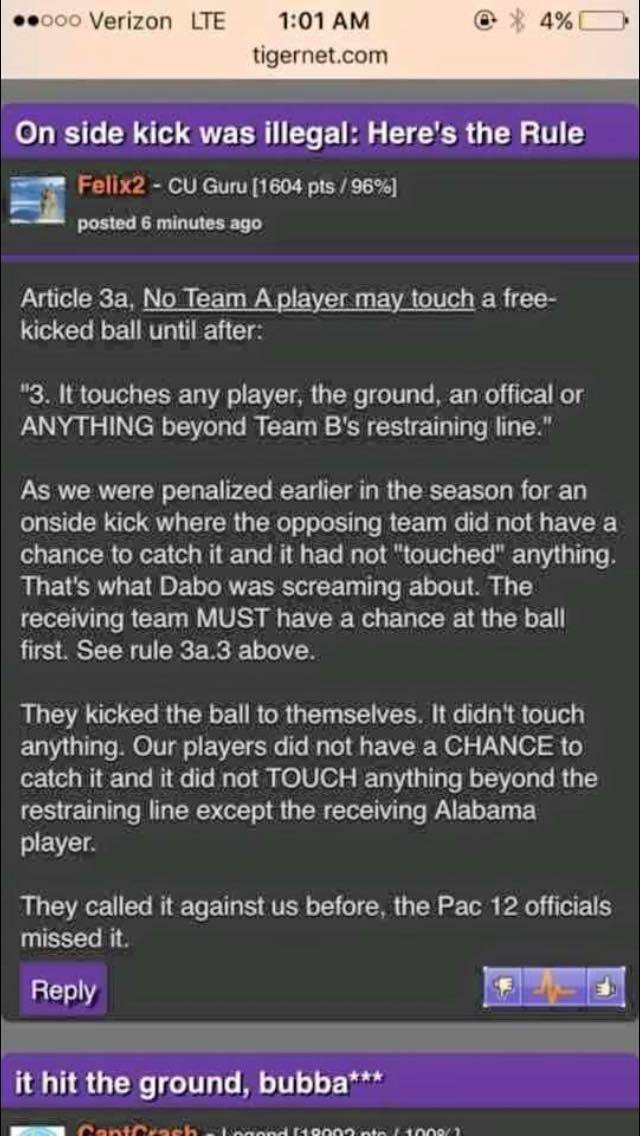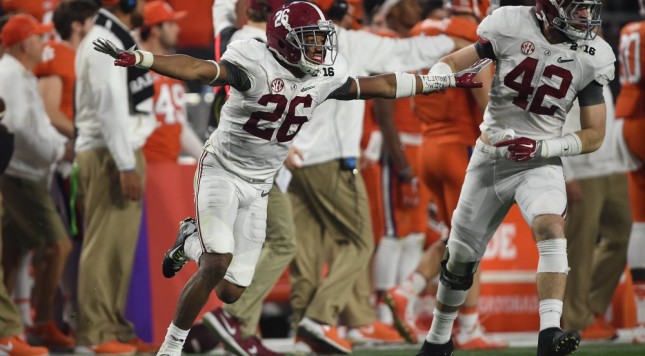This picture has been flying around college football social media since Monday’s national championship game between Alabama and Clemson:

If the picture is right, that’s a very big deal. A lot of people think the referees got the rule wrong and that Alabama should not have been awarded the ball because the ball did not bounce before the Crimson Tide recovered it. The rule clearly says that the ball must touch a player, the ground, or anything else beyond 10 yards before it can be recovered, right?
Wrong.
This is only a partial citation of the rule. You can see that this is a number 3 under Article 3a (in Section 1 of Rule 6). Let’s cite the rule in full.

It is very clear that there are three potential things that can permit the kicking team to touch the ball. The first is if it touches a player on the opposing team, no matter how far it has traveled. The second is if it goes 10 yards. The third (which is the one cited in the picture at the top) is if it touches something beyond the 10-yard restraining line, even if the ball itself did not travel 10 yards (or if the ball bounces backwards after traveling ten yards).
The referees got the rule right.
Dabo Swinney thought he knew the rule because of this play against South Carolina in 2014 (play starts at 28:05, referee’s explanation starts at 29:40):
The rule that Clemson fans should actually be quoting is 6-4-1-a. This rule states:

This is the rule that came up in the South Carolina game. It only comes into effect if a player on the receiving team is in position to catch the kick. Was any Clemson player in position to catch the free kick? Judging the physical limits of what a player can do is always a difficult judgment and the referees must err on the side of “he could have done it.” (Which is why, in reference to pass interference, so many balls that would almost definitely not have been caught are still ruled “catchable”; basically, if Odell Beckham could make the catch on his best day, then it is technically “catchable.”) Let’s take a look at this play carefully, which we can easily do thanks to someone who uploaded a slow-motion video of it to YouTube:
No. 1 on Clemson (Jayron Kearse) wasn’t too far away, and if someone makes the case that he could have dove and reached the ball it might be believable. However, the slow-motion pretty clearly shows us that he wouldn’t have made it. Kearse was a good six yards away from the ball at the time it was caught. I feel confident saying that the most athletic football player on his best day still couldn’t have made that catch.
The referees got the rule right.

